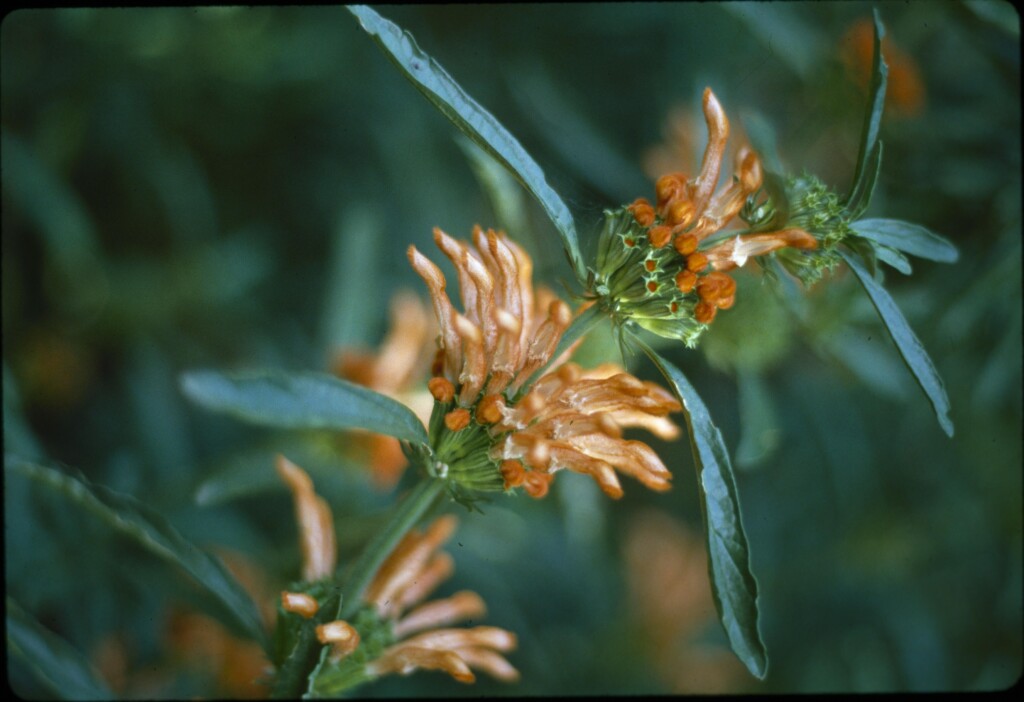Leonotis leonurus
(L.) R.Br. Lion's TailErect shrub to c. 3 m high; branches with abundant curved, short, simple, antrorse hairs and sessile glands. Leaves lanceolate to oblanceolate, 40–80 mm long, 5–25 mm wide, with pubescence similar to that of stems, margins more or less regularly serrate, at least distally, apex acute, sessile but base gradulaly tapered and sometimes pseudopetiolate. Inflorescence a series of almost globular clusters (pseudowhorls) along upper stems, each cluster subtended by a pair of leaf-like bracts, stems growing on beyond inflorescences; clusters of c. 20–40 subsessile flowers; calyx tube 13–16 mm long, prominently 10-veined, with raised transverse veins toward the apex, main lobes 5, often with a minor lobe between each pair of main lobes, 1–3 mm long; corolla 30–55 mm long, curved, with 3 short, reflexed, ventral lobes c. 3 mm long about midway along tube, the dorsal lobes indistinct and slightly hooded at apex, the whole covered with bright orange hairs c. 1.5 mm long externally, and internally near the apex; stamens and style slightly shorter than corolla; seeds oblong, c. 7 mm long. Flowers mainly summer.
GleP, VVP, GipP, HSF. Also naturalised WA, SA, Qld, NSW, Tas. Native to South Africa. A substantial naturalised population has been noted from near Lakes Entrance growing in Banksia integrifolia coastal woodland.
A common garden plant, and occasionally spreading from cultivated plants (e.g. Melbourne suburbs).
 Spinning
Spinning



